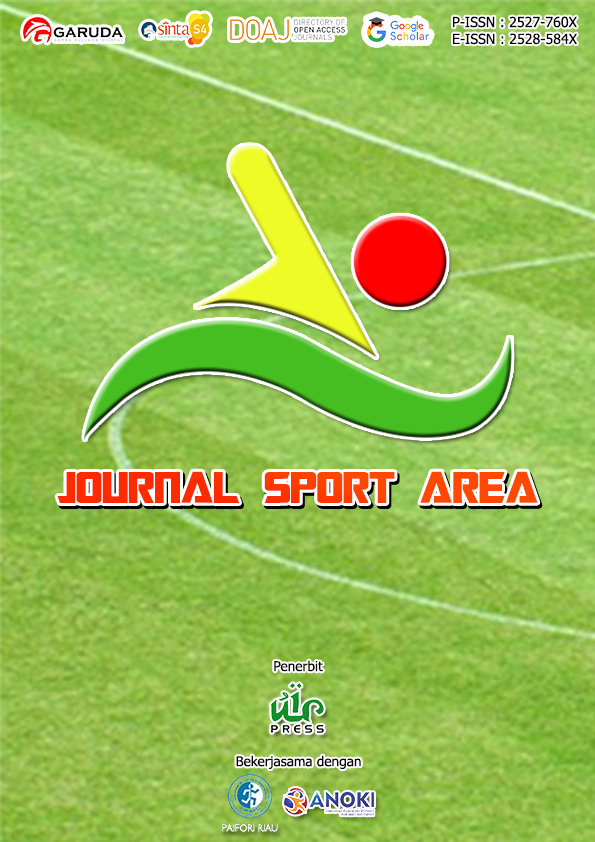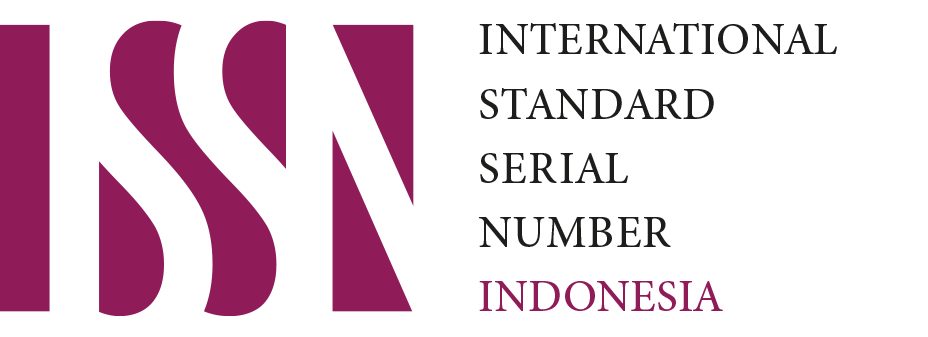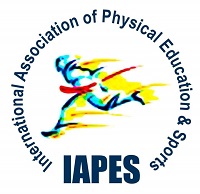Indices determining effective teaching of physical education in secondary school teachers in Ilorin West Local Government Area
Keywords:
Physical education, indices, teaching strategies, instructional materials, school factors, effective teachingAbstract
Many factors cause students' physical education learning outcomes to be not so encouraging, ranging from learning infrastructure, teacher competence, learning environment, learning curriculum. The purpose of this study was to investigate the index of determining the effective teaching of physical education in secondary schools in West Ilorin Local Government Area, Kwara State, Nigeria. Descriptive research design of survey type is used in this research. The population for this study consisted of sixty-five (65) physical education teachers in both public and private secondary schools. Four five (45) public secondary schools and twenty (20) private secondary schools were deliberately selected for this study. The questionnaire was well structured and designed by the researcher as the instrument used for data collection. The instrument was validated and the reliability of the instrument was confirmed through the split-half method. This instrument was given to 20 respondents from the East Ilorin Regional Government, Kwara State. All items on even numbers are scored separately, as well as scores on odd items. Both scores were analyzed using Cronbach's alpha, which yielded 0.62r. Sixty-five (65) questionnaire forms were taken and analyzed using PPMC and Multiple Linear Regression at an alpha level of 0.05. Based on the research findings, it is concluded that the Index (teaching materials, teaching strategies and school factors) determines the effectiveness of teaching physical education in junior high schools in the Ilorin Local Government Area of Kwara State, Nigeria. The researcher recommends that this type of research should be conducted in other Local Government Areas in Kwara State to investigate the index that determines effective physical education teaching.
Downloads
References
Alfrey, L., Cale, L., & A. Webb, L. (2012). Physical education teachers’ continuing professional development in health-related exercise. Physical Education and Sport Pedagogy, 17(5), 477–491. https://doi.org/10.1080/17408989.2011.594429
Butz, J. V. (2018). Applications for constructivist teaching in physical education. Strategies, 31(4), 12–18. https://doi.org/10.1080/08924562.2018.1465868
Chang, S. H., & Lee, J. (2020). The application of a logic model for planning a professional development workshop for physical education teachers. International Journal of Kinesiology in Higher Education, 4(4), 141–148. https://doi.org/10.1080/24711616.2019.1710732
Chen, Y. C. J., Sinelnikov, O. A., & Hastie, P. (2013). Professional development in physical education: Introducing the sport education model to teachers in Taiwan. Asia-Pacific Journal of Health, Sport and Physical Education, 4(1), 1–17. https://doi.org/10.1080/18377122.2013.760424
Dyson, B. (2014). Quality physical education: A commentary on effective physical education teaching. Research Quarterly for Exercise and Sport, 85(2), 144–152. https://doi.org/10.1080/02701367.2014.904155
Ellison, D. W., & Woods, A. M. (2016). Deliberate practice as a tool for effective teaching in physical education. Journal of Physical Education, Recreation & Dance, 87(2), 15–19. https://doi.org/10.1080/07303084.2015.1119075
Ennis, C. D. (2017). Educating students for a lifetime of physical activity: enhancing mindfulness, motivation, and meaning. Research Quarterly for Exercise and Sport, 88(3), 241–250. https://doi.org/10.1080/02701367.2017.1342495
Ensign, J., Mays Woods, A., Kulinna, P. H., & McLoughlin, G. (2018). The teaching performance of first-year physical educators. Physical Education and Sport Pedagogy, 23(6), 592–608. https://doi.org/10.1080/17408989.2018.1485140
Fikrianto, R. S., Sofyan, D., & Fauzi, R. S. (2021). Basic movement skills: Using turbo media for throwing skills for elementary school students. Journal of Physical Education, Health and Sport, 8(1), 1–6.
Gumbo, S., Magonde, S., & Nhamo, E. (2017). Teaching strategies employed by physical education teachers in gokwe north primary schools. International Journal of Sport, Exercise and Health Research, 1(2), 61–65. https://doi.org/10.31254/sportmed.1203
Harris, J. (2014). Physical education teacher education students’ knowledge, perceptions and experiences of promoting healthy, active lifestyles in secondary schools. Physical Education and Sport Pedagogy, 19(5), 466–480. https://doi.org/10.1080/17408989.2013.769506
Henkel, S. A. (2016). Using triage figuratively to describe effective teaching in physical education. Journal of Physical Education, Recreation & Dance, 87(1), 8–14. https://doi.org/10.1080/07303084.2015.1109489
Jung, H., & Choi, E. (2016). The importance of indirect teaching behaviour and its educational effects in physical education. Physical Education and Sport Pedagogy, 21(2), 121–136. https://doi.org/10.1080/17408989.2014.923990
Jung, J. (2012). The focus, role, and meaning of experienced teachers’ reflection in physical education. Physical Education and Sport Pedagogy, 17(2), 157–175. https://doi.org/10.1080/17408989.2011.565471
Kyrgiridis, P., Derri, V., Emmanouilidou, K., Chlapoutaki, E., & Kioumourtzoglou, E. (2014). Development of a questionnaire for self-evaluation of teacher effectiveness in physical education (SETEQ-PE). Measurement in Physical Education and Exercise Science, 18(2), 73–90. https://doi.org/10.1080/1091367X.2013.866557
Li, H., Li, W., Zhao, Q., & Li, M. (2017). Including overweight and obese students in physical education: an urgent need and effective teaching strategies. Journal of Physical Education, Recreation & Dance, 88(5), 33–38. https://doi.org/10.1080/07303084.2017.1294513
Lindsay, E. L. (2014). Effective teaching in physical education: The view from a variety of trenches. Research Quarterly for Exercise and Sport, 85(1), 31–37. https://doi.org/10.1080/02701367.2014.873330
MacPhail, A., Tannehill, D., Leirhaug, P. E., & Borghouts, L. (2021). Promoting instructional alignment in physical education teacher education. Physical Education and Sport Pedagogy, 0(0), 1–12. https://doi.org/10.1080/17408989.2021.1958177
McKenzie, T. L., & Lounsbery, M. A. F. (2013). Physical education teacher effectiveness in a public health context. Research Quarterly for Exercise and Sport, 84(4), 419–430. https://doi.org/10.1080/02701367.2013.844025
McKenzie, T. L., & Lounsbery, M. A. F. (2014). The pill not taken: Revisiting physical education teacher effectiveness in a public health context. Research Quarterly for Exercise and Sport, 85(3), 287–292. https://doi.org/10.1080/02701367.2014.931203
Metzler, M. W. (2014). Teacher effectiveness research in physical education: The future isn’t what it used to be. Research Quarterly for Exercise and Sport, 85(1), 14–19. https://doi.org/10.1080/02701367.2014.872932
Mupa, P., & Isaac., T. C. (2015). Factors contributing to ineffective teaching and learning in primary schools: Why are schools in decadence? Journal of Education and Practice, 6(19), 125–132.
Murphy, F., & O’Leary, M. (2012). Supporting primary teachers to teach physical education: Continuing the journey. Irish Educational Studies, 31(3), 297–310. https://doi.org/10.1080/03323315.2012.710065
Nikravan, M., Safania, A. M., & Zareii, A. (2019). Physical education method: Effects on physical fitness and competency of the students. Annals of Applied Sport Science, 7(4), 17–26. https://doi.org/10.29252/aassjournal.698
Nwaogu, F., & Oyedele, A. (2019). Facilities and funding as indices for effective teaching of physical education in public secondary schools in Obio. International Journal of Physical Education, Sports and Health, 6(5), 79–82.
Pišot, R., Plevnik, M., & Štemberger, V. (2014). Effective teaching in physical education: slovenian perspective. Research Quarterly for Exercise and Sport, 85(2), 153–156. https://doi.org/10.1080/02701367.2014.904715
Rink, J. E. (2013). Measuring teacher effectiveness in physical education. Research Quarterly for Exercise and Sport, 84(4), 407–418. https://doi.org/10.1080/02701367.2013.844018
Sofyan, D. (2020). Pengaruh model cooperative learning tipe student teams achievement division terhadap keterampilan lay-up shoot bola basket. Jurnal Educatio FKIP UNMA, 6(2), 690–695. https://doi.org/10.31949/educatio.v6i2.740
Solmon, M. A., & Garn, A. C. (2014). Effective teaching in physical education: Using transportation metaphors to assess our status and drive our future. Research Quarterly for Exercise and Sport, 85(1), 20–26. https://doi.org/10.1080/02701367.2013.872530
Trendowski, T. N., & Woods, A. M. (2015). Seven student-centered principles for smart teaching in physical education. Journal of Physical Education, Recreation & Dance, 86(8), 41–47. https://doi.org/10.1080/07303084.2015.1075923
Tsangaridou, N. (2014). Moving towards effective physical education teacher education for generalist primary teachers: a view from Cyprus. Education 3-13, 44(6), 632–647. https://doi.org/10.1080/03004279.2014.952757
Tsuda, E., Sato, T., Wyant, J. D., & Hasegawa, E. (2019). Japanese elementary teachers’ experiences of physical education professional development in depopulated rural school districts. Curriculum Studies in Health and Physical Education, 10(3), 262–276. https://doi.org/10.1080/25742981.2019.1635508
Usher, W., Edwards, A., & de Meyrick, B. (2015). Utilizing educational theoretical models to support effective physical education pedagogy. Cogent Education, 2(1). https://doi.org/10.1080/2331186X.2015.1094847
Ward, P. (2013). The Role of content knowledge in conceptions of teaching effectiveness in physical education. Research Quarterly for Exercise and Sport, 84(4), 431–440. https://doi.org/10.1080/02701367.2013.844045
Ward, P. (2014). A response to the conversations on effective teaching in physical education. Research Quarterly for Exercise and Sport, 85(3), 293–296. https://doi.org/10.1080/02701367.2014.933653
Published
How to Cite
Issue
Section
This is an open-access article distributed under the terms of the Creative Commons Attribution-ShareAlike 4.0 International License which permits unrestricted use, distribution, and reproduction in any medium. Users are allowed to read, download, copy, distribute, search, or link to full-text articles in this journal without asking by giving appropriate credit, provide a link to the license, and indicate if changes were made. All of the remix, transform, or build upon the material must distribute the contributions under the same license as the original.
Accepted 2021-11-12
Published 2021-12-01



.png)




















.png)







.png)





